More results...
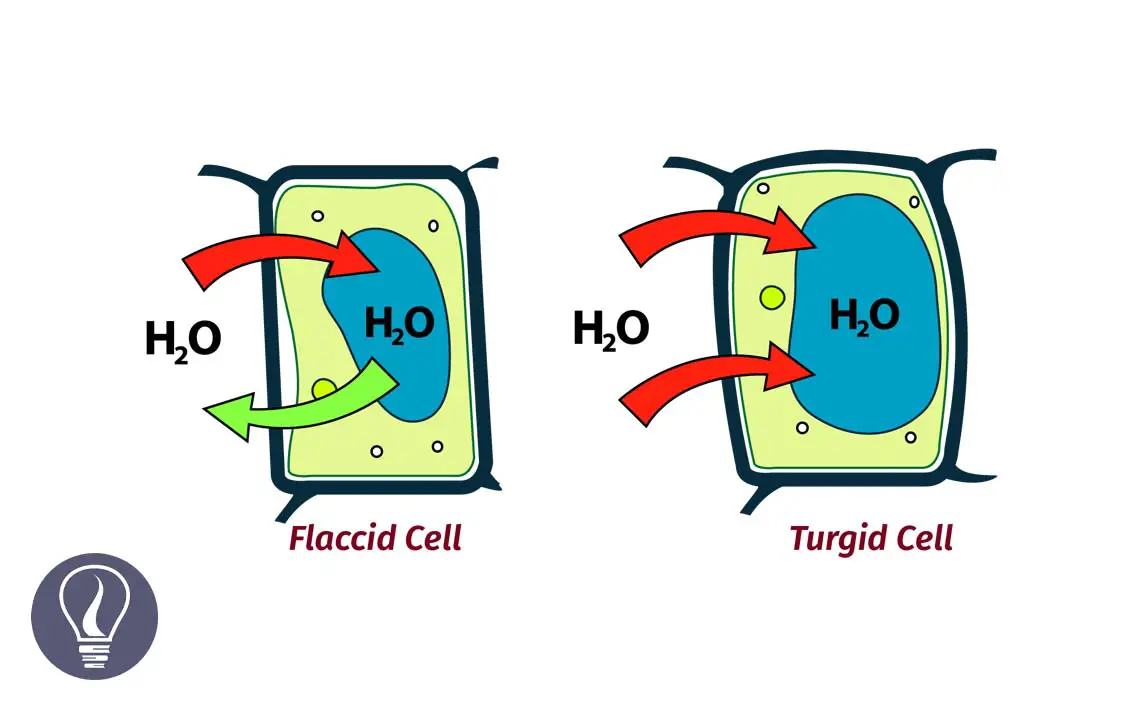

Plants can hold water more than animals. Generally, Plants consist of 90% of water. Plant cells hold water in their protoplast. The protoplast is the living part of the cell. That means the cell membrane, cytoplasm, and internal organs without a cell wall.
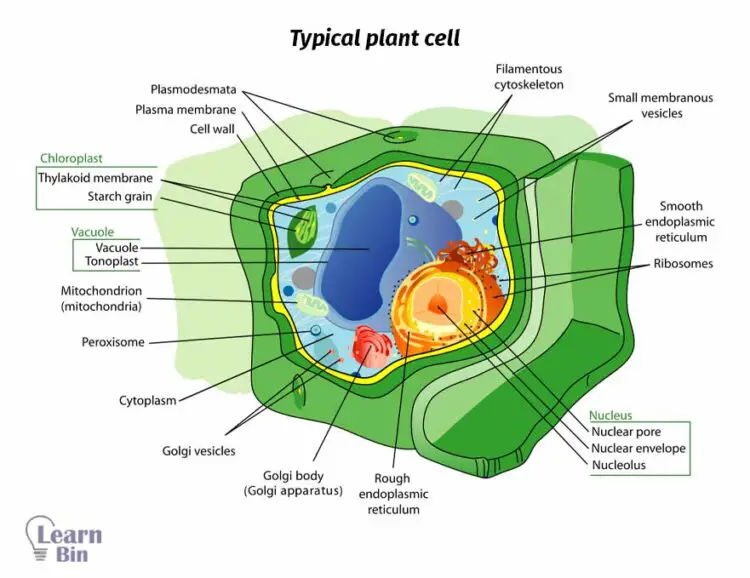
In a plant cell, the maximum amount of water is contained in the vacuole. The water content in the cytoplasm is relatively lower than in the vacuole.
When a plant cell is bearing the maximum amount of water that can bear, the cell becomes swollen and hard. This type is called a turgid cell. When the water potential is low in the cell when compared to its surroundings, water molecules enter the plant cell by osmosis. Therefore, the volume of the cell increases.
Due to the high water change content in the cell, the internal pressure of the cell also increases. This pressure is called Turgid pressure. Turgid pressure causes to increase in the water potential in the cell.
When the water potential is high in a plant cell when compared to its surroundings, water molecules are removed from the cell. Then the cell becomes a flaccid cell.
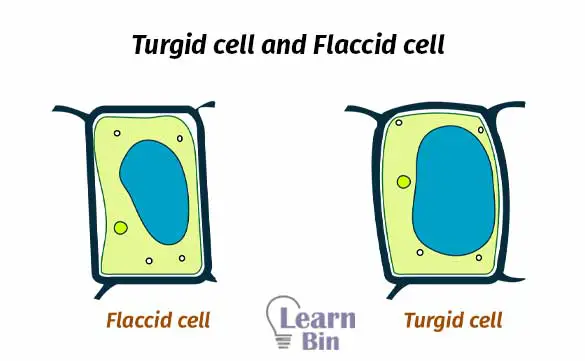
Osmosis is the movement of water molecules through a partially permeable membrane along a water potential gradient. Water molecules travel from a region where there is a higher water potential to a region where there is a lower water potential.
In this situation, a higher water potential means a lower negative value and a lower water potential means a higher negative value.
The cell membrane of a plant cell is a partially permeable membrane. Therefore, water molecules can enter or be removed through this membrane. Entering or removing water molecules depends on the water potential of the cell and its surroundings.
Solute concentration is a major factor that affects the water potential. According to the solute concentration of the external solution, there are three types of solutions.
A hypotonic solution is a solution that has a lower solute concentration than the plant tissue. The water potential is relatively high in hypotonic solutions.
A hypertonic solution is a solution that has a higher solute concentration than the plant tissue. The water potential is relatively low in hypertonic solutions.
An isotonic solution is a solution that has the same solute concentration as the plant tissue. Here, the water potentials are the same in both the solution and the tissue.
When a flaccid cell is immersed in a hypotonic solution, the water potential of the external solution is higher than the cell. Therefore, water molecules enter the cell through the cell membrane.
Due to this, the volume of the protoplast is increasing. As the volume of the protoplast increases, it starts to touch the cell wall. This situation where the protoplast barely touches the cell wall is the initial turgidity.
When a cell is in a flaccid state or at initial turgidity, the pressure potential is zero. Therefore, the water potential is equal to the solute potential.
When the cell becomes turgid, the water potential and pressure potential increase. The solute potential is decreasing. Water molecules will enter the cell until the water potentials are equal in both the cell and the external solution.
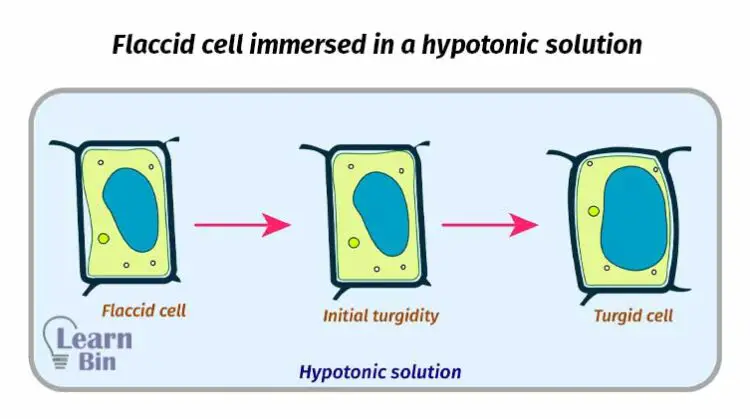
In this situation, the water potential of the external solution is lower than the cell. Therefore, water molecules are removed from the cell to the solution. As water molecules are removed from the cell, the volume of the cell decreases and the protoplast starts to shrink.
Due to the shrinkage of the protoplast, the protoplast is about to separate from the cell wall. This is the initial flaccidity of the cell.
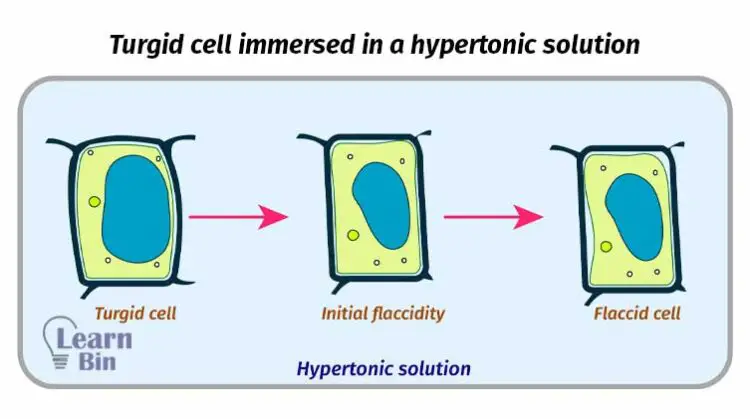
In a turgid cell, there is a water potential, solute potential, and pressure potential. When water is removed from the cell, water potential, solute potential, and pressure potential decrease.
When the cell becomes the initial flaccidity state, the pressure potential becomes zero. At this point and after the water potential is equal to the solute potential.
The water potential of distilled water is zero. This is the maximum water potential. In the cell, there is respectively lower water potential than the distilled water due to the solute contents. Therefore, water molecules enter the cell according to a water potential gradient.
Here, water potential, solute potential, and the pressure potential of the cell are increased. Finally, the system becomes equilibrium when the water potential of the cell reaches zero.
When the water molecules enter the cell, the pressure potential increases. When it takes a similar and opposite value to the solution, the water potential of the cell becomes zero.

The cover image was created using an image by LadyofHats, licensed under the Public domain, via Wikimedia Commons
Figure 01: Contains an image by LadyofHats, licensed under the Public domain, via Wikimedia Commons